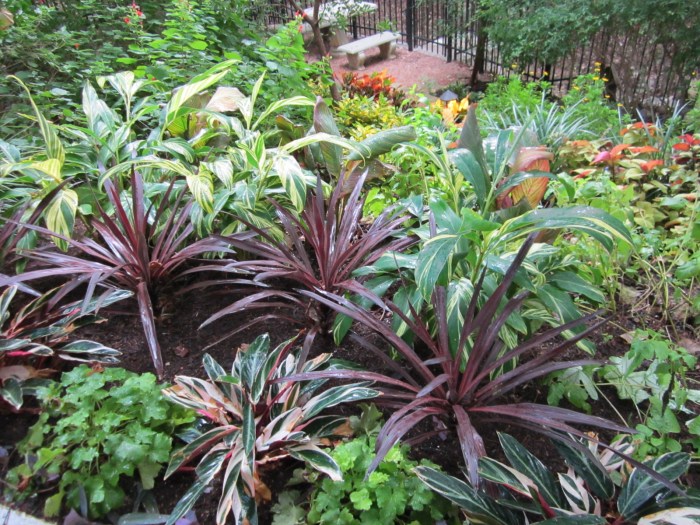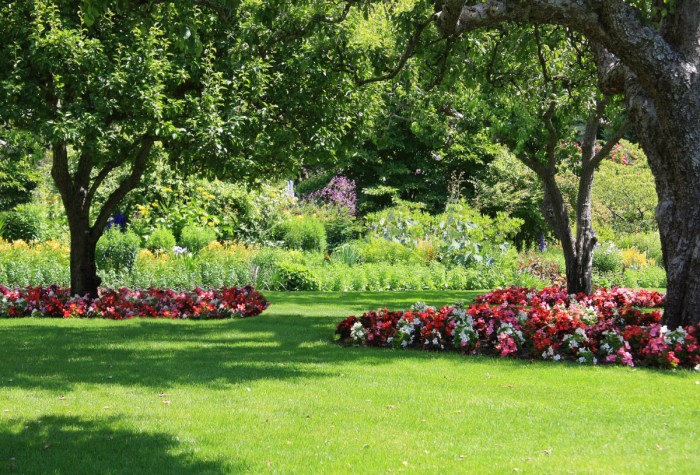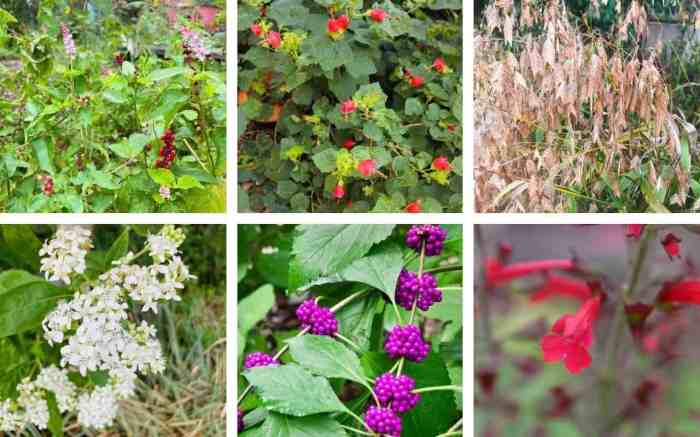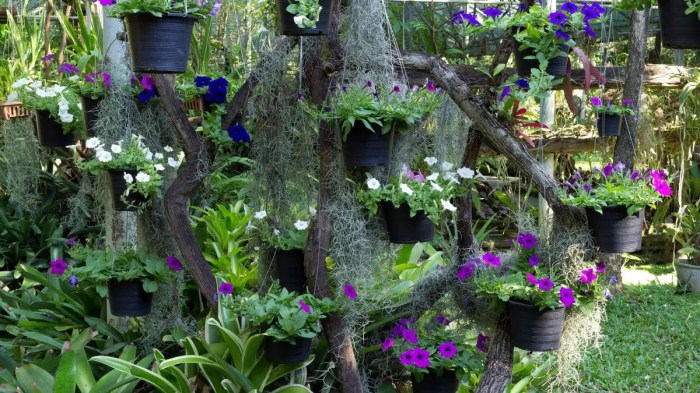When it comes to gardening in the Lone Star State, finding plants that thrive in the shade can be a challenge. But with the right knowledge, you can create a stunning oasis in even the shadiest spots. This comprehensive guide will introduce you to the best plants for Texas shade, ensuring your garden flourishes with vibrant colors and lush greenery.
From shade-tolerant perennials to native plants and flowering shrubs, we’ll explore a wide range of options that will transform your shady areas into a haven of beauty.
Shade-Tolerant Perennials: Best Plants For Texas Shade

Texas gardeners can choose from a variety of shade-tolerant perennials to add beauty and interest to their landscapes. These plants are well-suited to the state’s hot, humid climate and can thrive in areas with limited sunlight.
When selecting shade-tolerant perennials for your Texas garden, consider factors such as blooming period, foliage color, and height. Some of the most popular shade-tolerant perennials for Texas include:
Ajuga
- Commonly known as bugleweed, ajuga is a low-growing perennial that forms a dense groundcover.
- It features glossy green leaves and produces blue or purple flowers in the spring.
- Ajuga prefers moist, well-drained soil and can tolerate partial shade to full shade.
Astilbe
- Astilbe is a graceful perennial that produces feathery plumes of flowers in shades of pink, red, white, or purple.
- It prefers moist, well-drained soil and partial shade to full shade.
- Astilbe is a good choice for adding height and color to shady areas of the garden.
Coral Bells
- Coral bells, also known as heuchera, are known for their colorful foliage, which comes in a wide range of shades, including green, purple, red, and silver.
- They produce small, bell-shaped flowers in the spring or summer.
- Coral bells prefer moist, well-drained soil and partial shade to full shade.
Ferns
- Ferns are a diverse group of plants that thrive in shady areas.
- They come in a variety of shapes and sizes, from small, delicate ferns to large, showy specimens.
- Ferns prefer moist, well-drained soil and partial shade to full shade.
Hostas
- Hostas are popular perennials that are grown for their large, attractive leaves.
- They come in a wide variety of sizes and colors, from small, green hostas to large, variegated hostas.
- Hostas prefer moist, well-drained soil and partial shade to full shade.
2. Native Shade-Loving Plants

Texas’s diverse landscape includes numerous native plants that thrive in shady areas. These plants not only enhance the beauty of shaded gardens but also provide ecological benefits, such as attracting wildlife and supporting biodiversity.
Texas Native Shade Plants
Some notable native Texas plants that excel in shady conditions include:
- Bigtooth Maple (Acer grandidentatum): A deciduous tree with large, serrated leaves that turn brilliant shades of yellow and orange in fall. Its deep taproot system makes it drought-tolerant.
- Carolina Jessamine (Gelsemium sempervirens): A vigorous vine with fragrant, trumpet-shaped yellow flowers that bloom in early spring. Its glossy evergreen foliage provides year-round interest.
- Coral Honeysuckle (Lonicera sempervirens): A twining vine with tubular, red-orange flowers that attract hummingbirds. Its dense foliage creates a lush screen.
- Mexican Plum (Prunus mexicana): A small, deciduous tree with showy pink flowers in spring and edible purple fruit in summer. Its spreading habit provides ample shade.
- Yaupon Holly (Ilex vomitoria): An evergreen shrub with glossy, spiny leaves and clusters of small, white flowers. Its dense growth makes it an ideal hedge plant.
These native plants are well-adapted to Texas’s climate, with deep root systems that help them access moisture during droughts. Their diverse forms and textures add visual interest to shady gardens while providing habitat and food sources for various wildlife species.
For those seeking the best plants for Texas shade, there are many options to consider. If you’re looking for something that can bring a touch of greenery to your indoor spaces, hanging plants indoor are a great choice. They can add a touch of elegance and style to any room.
Once you’ve chosen your hanging plants, you can return your focus to selecting the best plants for Texas shade to complete your gardening project.
3. Shrubs for Shade

Shade-tolerant shrubs offer a diverse array of foliage textures, sizes, and flowering seasons, making them ideal for creating privacy screens, adding structural interest, and attracting pollinators to shady gardens in Texas.
Shrub Comparison Table, Best plants for texas shade
The following table compares popular shade-tolerant shrubs for Texas, highlighting their growth habits, foliage types, and flowering seasons:
| Shrub | Growth Habit | Foliage Type | Flowering Season |
|---|---|---|---|
| Abelia | Compact to spreading | Glossy, evergreen | Spring to fall |
| Boxwood | Formal, evergreen | Small, leathery | Insignificant |
| Camellia | Upright to spreading | Glossy, evergreen | Winter to spring |
| Holly | Upright to spreading | Glossy, evergreen with spiny edges | Spring |
| Hydrangea | Upright to spreading | Deciduous, large and serrated | Summer to fall |
| Loropetalum | Upright to spreading | Strap-like, evergreen | Spring to fall |
| Mahonia | Upright to spreading | Compound, evergreen | Winter to spring |
| Nandina | Upright to spreading | Compound, evergreen | Fall to winter |
| Viburnum | Upright to spreading | Deciduous or evergreen, serrated | Spring to summer |
The ideal placement for shade-tolerant shrubs depends on their specific growth habits and sunlight requirements. Smaller shrubs, such as boxwood and abelia, are suitable for borders and edging, while larger shrubs, like hydrangeas and viburnums, can serve as focal points or create privacy screens.
If you’re looking to add some greenery to your shady Texas yard, consider choosing from the best plants for Texas shade. These plants are well-suited to the state’s unique climate and can thrive even in low-light conditions. For those who prefer to pot their plants, there are also a variety of best plants to pot that can tolerate shady conditions.
By combining the best plants for Texas shade with the best plants to pot, you can create a beautiful and thriving garden that will add curb appeal to your home.
Maintenance requirements for shade-tolerant shrubs vary, but most benefit from regular watering, especially during hot and dry weather. Pruning is essential for maintaining desired shapes and sizes, and it should be done according to the specific requirements of each species.
4. Groundcovers for Shade

Groundcovers are a valuable addition to shady areas in Texas, offering several benefits: they suppress weeds, retain moisture, and enhance the aesthetic appeal of the landscape. When selecting groundcovers for shade, it’s crucial to consider factors such as soil conditions, light availability, and desired growth habit.
Evergreen Groundcovers
Evergreen groundcovers maintain their foliage throughout the year, providing continuous coverage and color. Some popular choices include:
-
-*Liriope (Liriope muscari)
Liriope is a versatile groundcover that thrives in moist, well-drained soil. It features grass-like foliage and produces spikes of purple or white flowers in late summer.
-*Pachysandra (Pachysandra terminalis)
Whether you’re looking for the best plants for Texas shade or best plants for a cubicle , it’s important to consider the specific needs of your environment. In the case of Texas shade, you’ll want to choose plants that can tolerate low light levels and high humidity.
Some great options include ferns, begonias, and peace lilies. If you’re looking for plants to brighten up your cubicle, you might want to consider succulents, air plants, or snake plants.
Pachysandra is a low-growing groundcover with glossy, dark green leaves. It prefers moist, humus-rich soil and can tolerate dry shade.
In Texas, selecting the right plants for shade is crucial. From drought-tolerant natives to lush ferns, the options are vast. However, when it comes to erosion control, specific plants excel. Check out our guide to best plants erosion control for a deeper dive into these valuable species.
With their deep root systems and dense foliage, these plants help stabilize soil and prevent erosion. Returning to the topic of Texas shade plants, consider native options like the Texas Star hibiscus or the Mountain laurel for a combination of beauty and practicality.
-*Vinca minor (Vinca minor)
Vinca minor is a trailing groundcover with attractive evergreen foliage and blue or purple flowers in spring. It is well-suited for shady areas with moist soil.
Deciduous Groundcovers
Deciduous groundcovers lose their leaves in winter but provide seasonal interest and can help prevent soil erosion. Suitable options include:
-
-*Ajuga reptans (Ajuga reptans)
Ajuga reptans is a low-growing groundcover with creeping stems and blue or purple flowers in spring. It prefers moist, well-drained soil.
-*Asarum canadense (Asarum canadense)
Asarum canadense is a native groundcover with heart-shaped leaves and inconspicuous flowers. It is well-suited for moist, shady areas with rich soil.
-*Tiarella cordifolia (Tiarella cordifolia)
Tiarella cordifolia is a shade-loving groundcover with attractive foliage and delicate white flowers in spring. It prefers moist, well-drained soil.
5. Shade-Tolerant Annuals
Annuals provide a burst of color to shady gardens in Texas, adding seasonal interest and variety. These plants complete their life cycle within one growing season, making them ideal for quick results and filling in gaps in existing gardens.
Recommended Shade-Tolerant Annuals
- Impatiens:Known for their vibrant blooms in shades of pink, purple, red, and white. Impatiens bloom profusely from spring to fall, thriving in moist, shady areas.
- Begonia:With its showy flowers and attractive foliage, begonia adds color and texture to shade gardens. It prefers well-drained soil and blooms in shades of pink, red, white, and yellow.
- Pansy:Pansies offer cheerful blooms in a wide range of colors, including blue, purple, yellow, and orange. They tolerate cooler temperatures and bloom from fall to spring.
- Torenia:Also known as wishbone flower, torenia produces trumpet-shaped blooms in shades of blue, purple, and white. It thrives in moist, shady locations.
- Lobelia:With its trailing habit and delicate flowers, lobelia is a great choice for hanging baskets or containers. It blooms in shades of blue, purple, and white from spring to fall.
Incorporating annuals into existing shade gardens is a simple way to enhance vibrancy and add seasonal interest. Choose plants with complementary colors and bloom times to create a cohesive and dynamic display. By following these tips, gardeners can enjoy a beautiful and colorful shade garden throughout the year.
Conclusive Thoughts
With careful planning and the right plant choices, you can create a thriving and visually appealing shade garden that will bring joy and tranquility to your outdoor space. Embrace the challenge of gardening in the shade and discover the hidden gems that will make your Texas garden a true sanctuary.
Question Bank
What are some of the most popular shade-tolerant perennials for Texas?
Hostas, ferns, coral bells, and daylilies are all excellent choices for adding color and texture to shady areas.
What native Texas plants thrive in the shade?
Yaupon holly, Texas sage, and Turk’s cap are all native plants that are well-adapted to the shade and provide ecological benefits.
How can I use shrubs to create privacy screens in my shady garden?
Privet, viburnum, and boxwood are all shade-tolerant shrubs that can be used to create hedges or privacy screens, adding structure and interest to your garden.